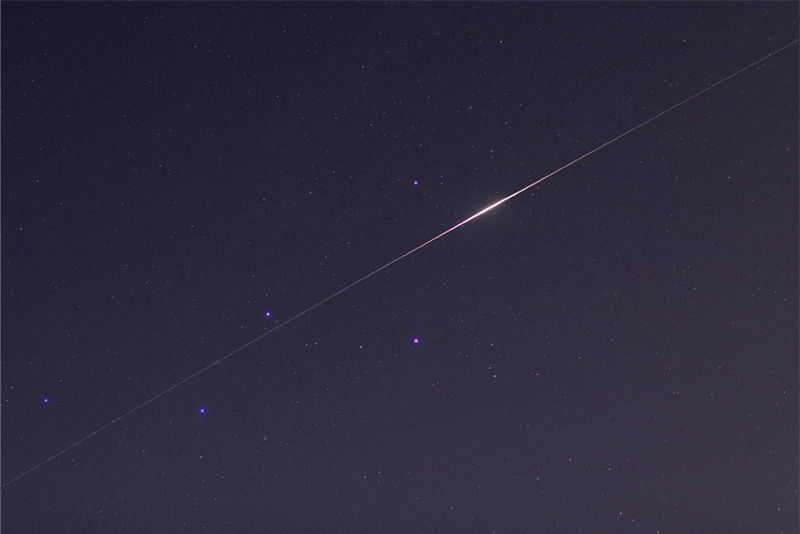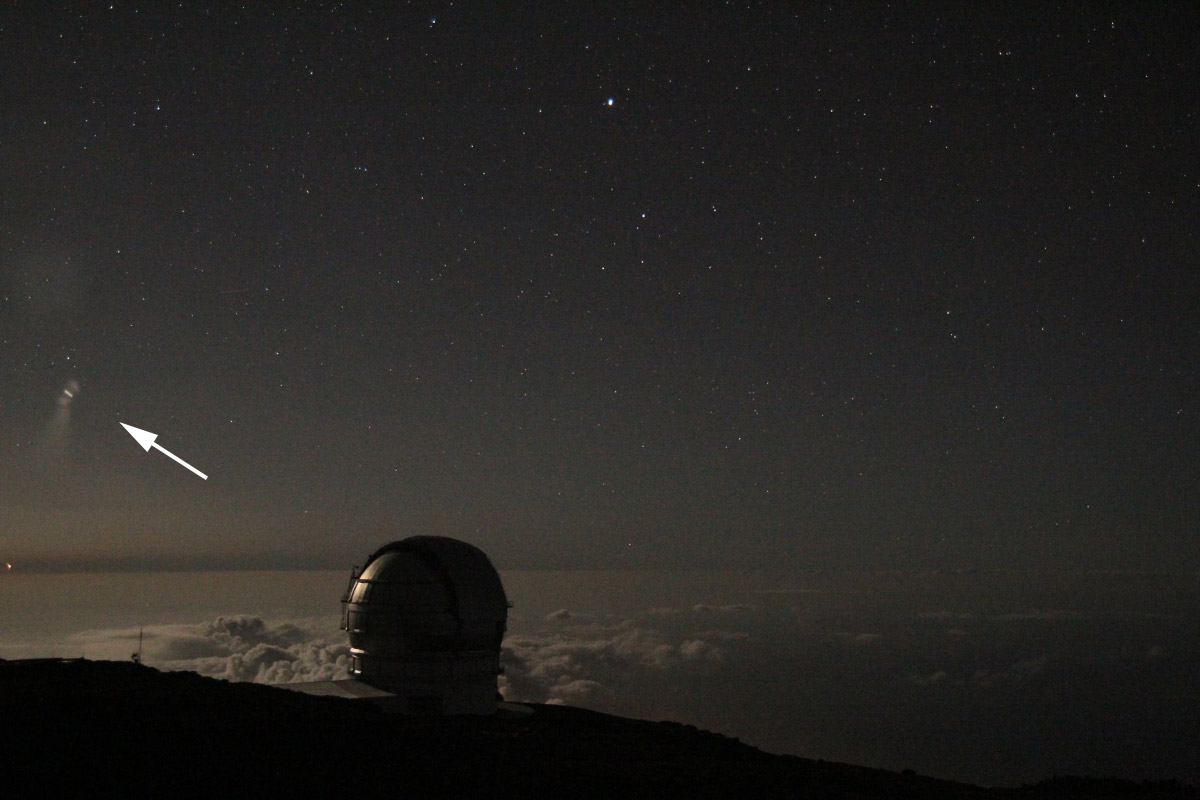UFO is the abbreviation for Unknown Flying Object (in German, Unbekanntes Flugobjekt). In this sense, UFOs exist because it often happens that an observer cannot immediately identify a phenomenon in the sky. However, a UFO is mostly associated with a spaceship from aliens.
In the media, UFO sightings are frequently reported. These sightings can usually be easily explained. Many UFO sightings are caused by skybeamers. These are lighting effect devices that send one or more very bright beams of light into the sky. The light path is reflected on clouds or in fog, and you see bright light spots on the cloud base. In most of these devices, the light spots move in a circular pattern.
In addition, fireballs have often caused "UFO alerts" in the past. When a meteoroid enters the Earth's atmosphere, a luminous phenomenon occurs, known as a meteor (shooting star). Very bright meteors are called fireballs. This phenomenon can last several seconds and appears as a bright light point moving quickly across the sky. It leaves a trail behind, which can glow for several seconds. If the meteor's trajectory points towards the observer, the light phenomenon appears almost stationary. Sometimes, rock fragments break apart while passing through the Earth's atmosphere, and the meteor splits into several fragments. Depending on the meteorite's composition, different colors can be seen (e.g., green).
Clouds of the type Altocumulus lenticularis sometimes exhibit the classic saucer shape. They form due to the foehn effect, especially in mountainous areas or near mountains.
UFO reports also often trace back to astronomical objects, such as a close conjunction of planets. The planet Venus (evening or morning star) has also been the cause of numerous UFO reports. Subjectively, one may have the impression that a star is making jerky movements, likely due to unconscious eye movements.
Often, light reflections on a window pane lead to strange phenomena. Finally, UFO sightings are also due to deliberate misleadings. There are now even UFO kits available for purchase, with which "jokers" can fool the public. If you have observed a sky phenomenon for which you have no explanation, we will gladly help you with identification. Please contact us.


